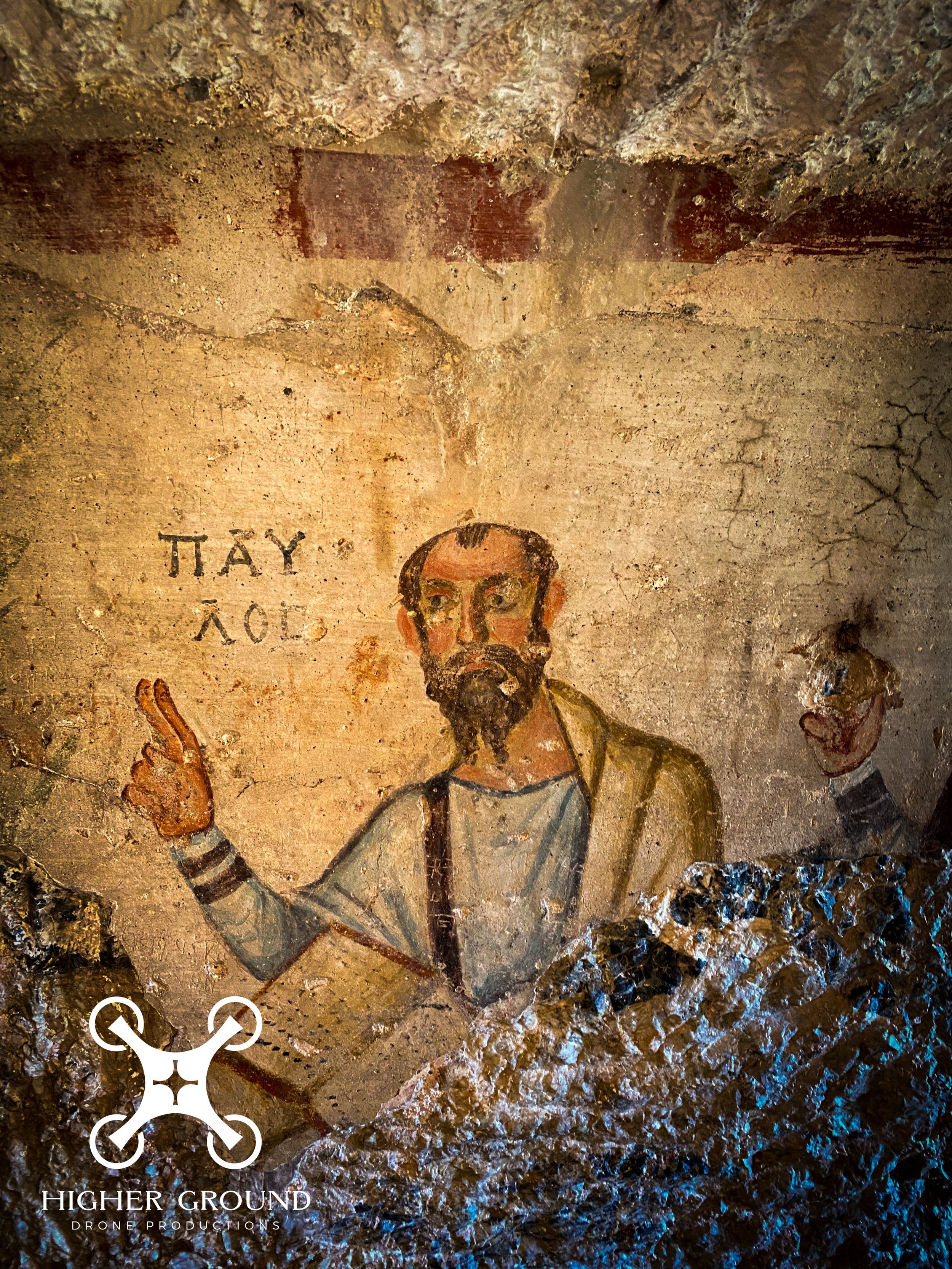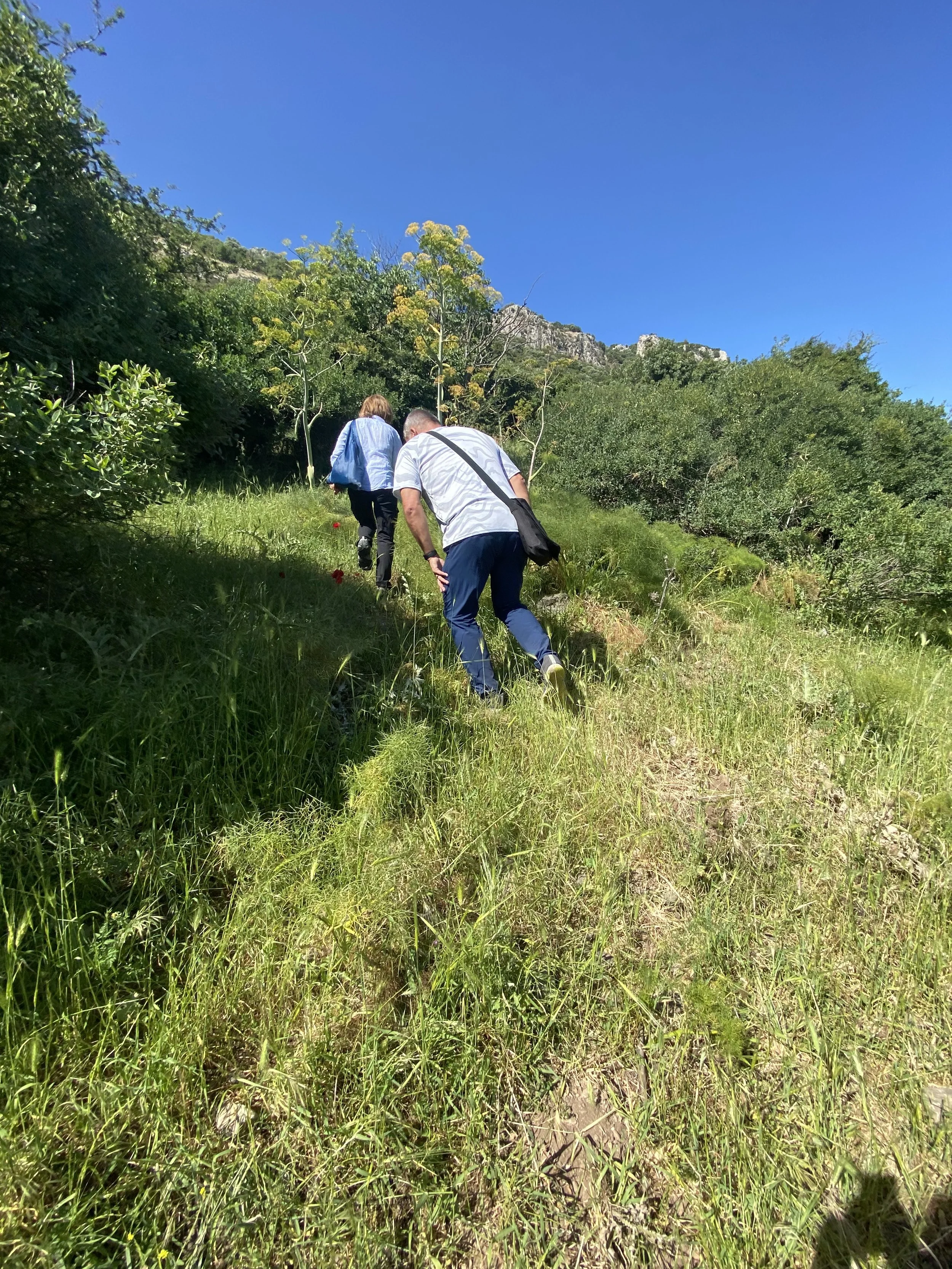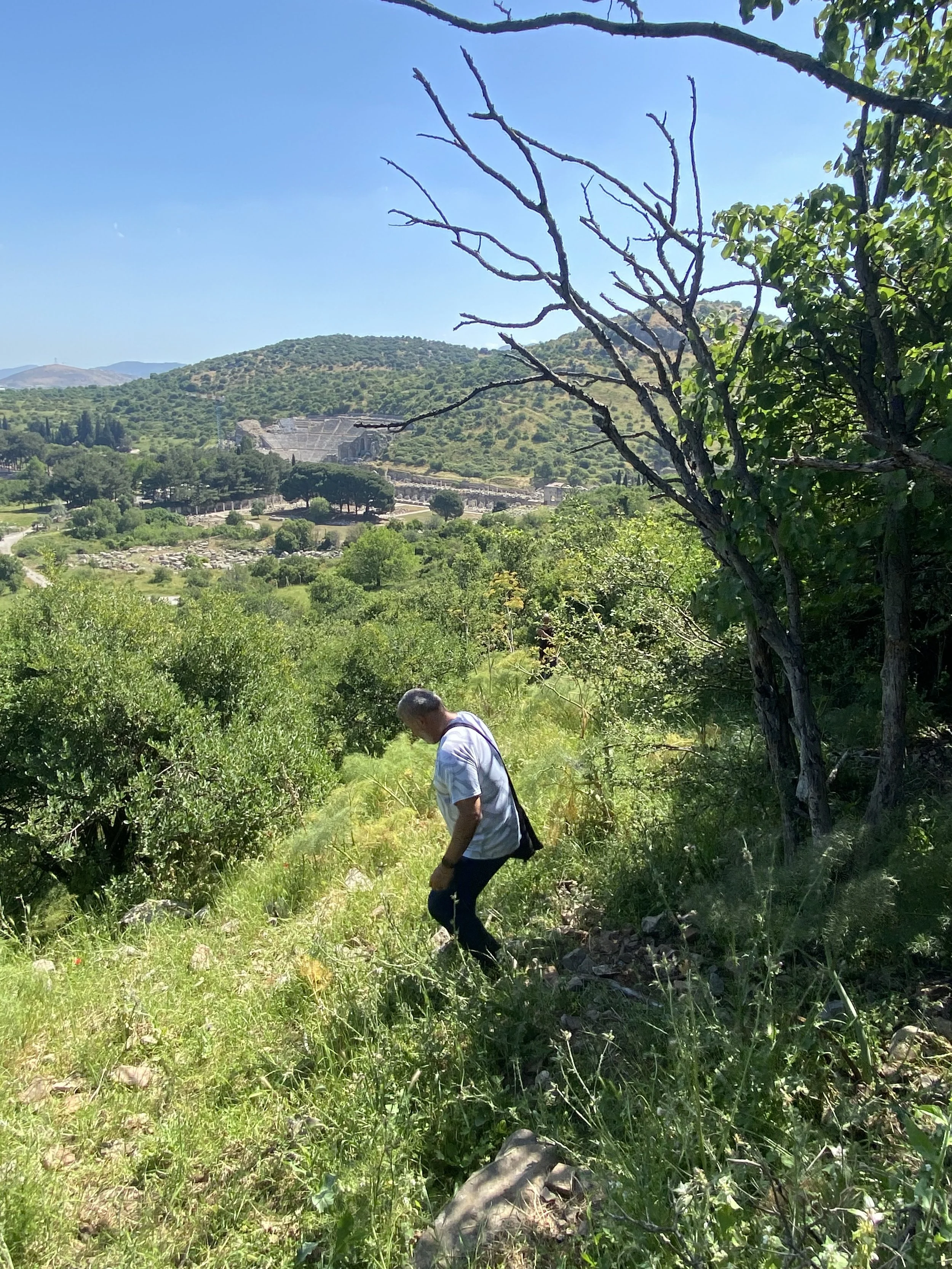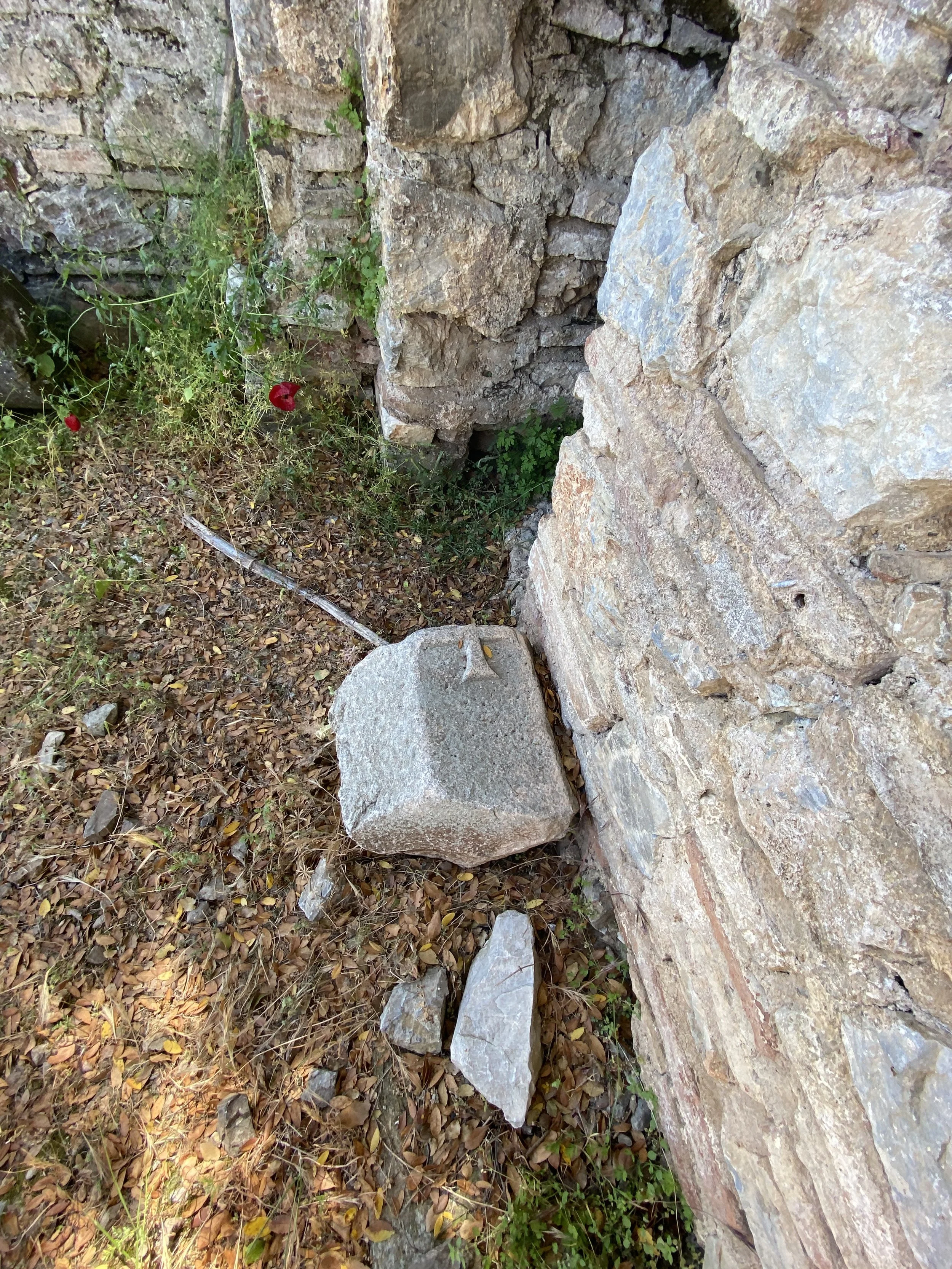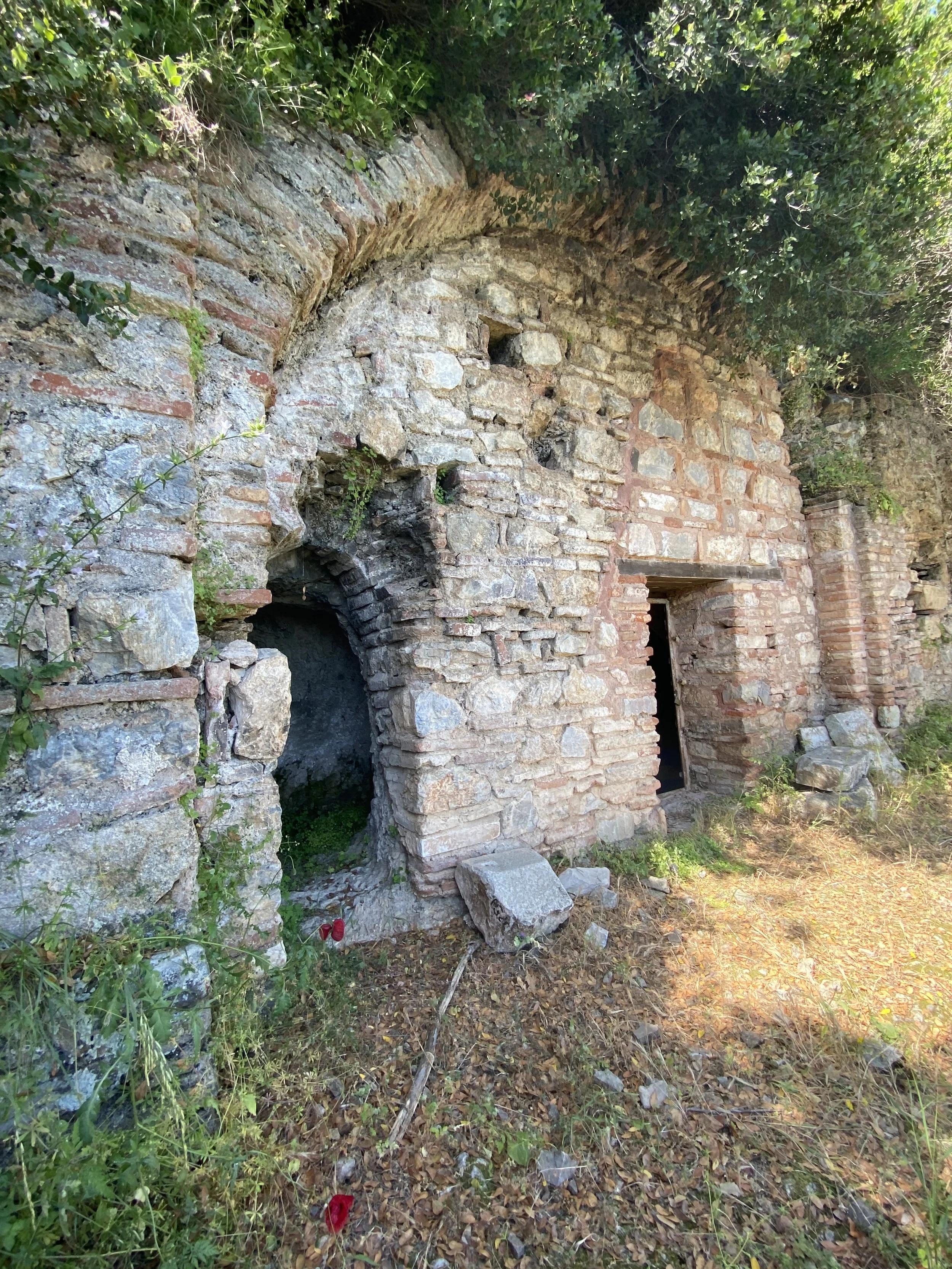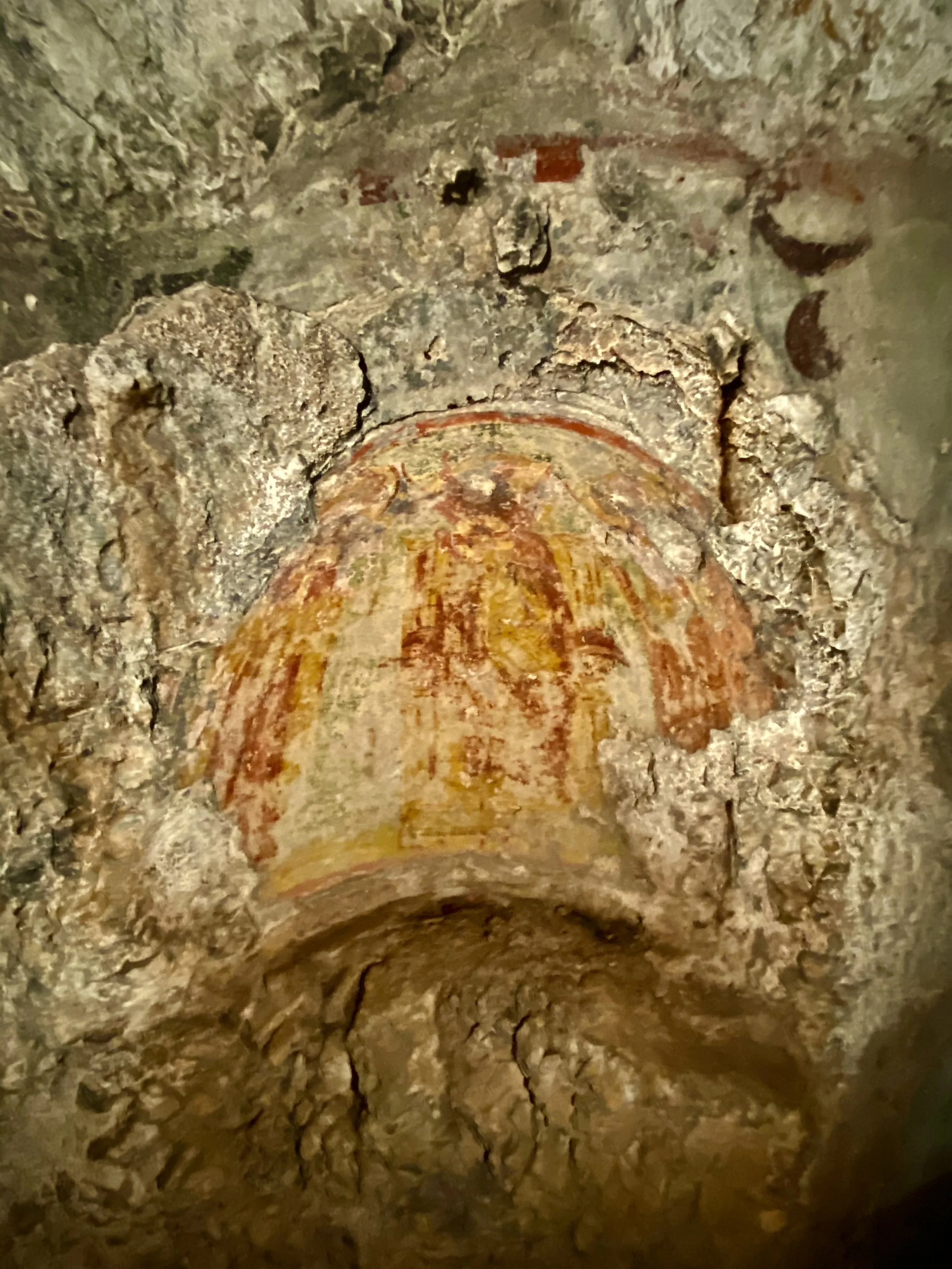St Paul’s Grotto, Ephesus Turkey
“Paul, an apostle of Christ Jesus by the will of God, To the saints who are in Ephesus, and are faithful in Christ Jesus: grace to you and peace form god our Father and the Lord Jesus Christ” Ephesians 1:1-2
One ancient example of the remembrance of Paul’s work in Ephesus is Paul’s Grotto on the north slope of Mount Bulbuldag. The cave chapel was rediscovered around 1892 - 1906. It is 15 meters long, 2 meters wide, and 2.3 meters tall with side alcoves. Multiple layers of paintings were found on the walls dating from the 4th century AD to the 12th and 13th centuries AD. The cave has hundreds of graffiti inscriptions from Christians over the centuries - prayers and praises and venerations of Christ. The cave appears to have been used by Christian from the 2nd century on, then finally used by shepherds who white washed the walls. Archeologists discovered the paintings and frescos under the lime and white wash.
After a steep climb through brush and thistles, up the hill from the back of the Terrace House area of the archeological site, you come up over a ridge and see the arched entrance to the grotto. There is a wonderful view of the Ephesus theater and the Marble Way. On the right when entering the grotto is a painting of Paul, Thecla and Thecla’s mother dating from the 6th century AD. At the back wall is a “Theophany” or God welcoming scene with Christ at the center surrounded by saints and apostles and a 13th century depiction of St George. On the left side wall as you enter is a depiction of the binding of Isaac. There is a niche with another painting of Jesus. It must have been a beautiful and colorful chapel during those early Christian centuries.
The grotto isn’t open to the public, but a visit can be arranged with the Ephesus archeological site. The same archeologist supervised our visit in 2021 and 2023,
Image of St Paul on the wall of the grotto above the archeological site of Ephesus

